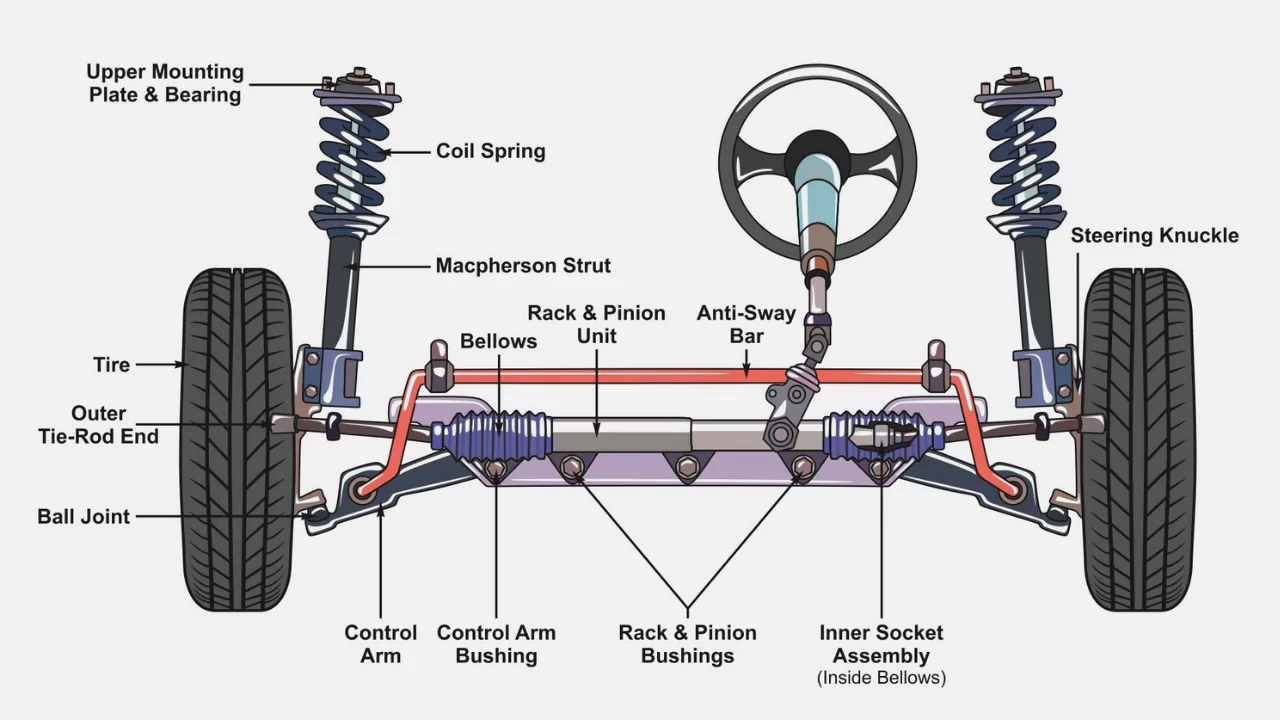
While most drivers pay close attention to their engine and brakes, the suspension and steering systems often go unnoticed—until something feels off. But these components are essential for your safety, comfort, and overall driving experience. They keep your tires in contact with the road, ensure responsive handling, and absorb shocks from bumps and potholes. If you’ve ever driven a car that pulls to one side or bounces excessively after hitting a bump, you’ve experienced what happens when these systems need attention.
This blog will break down what the suspension and steering systems do, how to identify problems, and why regular maintenance is essential for a safe and enjoyable ride.
The suspension system is made up of a series of components that connect your vehicle’s frame to the wheels. Its primary role is to absorb the impact of the road surface, improve vehicle handling, and keep your tires in consistent contact with the ground.
Key Components of the Suspension System:
Without a properly functioning suspension system, your car would feel every bump in the road—and worse, your tires might lose traction, affecting steering and braking.
The steering system allows the driver to guide the vehicle and change direction smoothly. It translates the rotation of the steering wheel into the movement of the vehicle’s wheels.
Main Components of the Steering System:
Modern vehicles often use electric power steering (EPS), which offers better fuel economy and adaptive steering assist features.
Both suspension and steering directly affect:
Ignoring issues in these systems can lead to dangerous driving conditions, reduced control, and costly repairs over time.
Knowing what to look out for can save you from bigger problems down the road. Here are common symptoms:
If you notice any of these signs, it's important to have your vehicle inspected by a professional technician as soon as possible.
Preventative maintenance is key to extending the life of your steering and suspension components. Here’s what you should keep in mind:
A reputable auto repair shop can identify issues early and perform replacements or alignments to prevent long-term damage.
Your suspension and steering systems are more than just mechanical parts; they’re critical to your car’s safety, comfort, and handling. When these systems are working properly, you enjoy a smooth, controlled ride. But when they fail or wear out, you’re left with a vehicle that feels unstable, uncomfortable, and unsafe.
If you’ve been experiencing odd handling, bouncing, or pulling to one side, don’t ignore it. Schedule a professional inspection and get the peace of mind that your vehicle is performing the way it should.
Need Suspension or Steering Service?
Our team of experienced technicians is ready to help. Whether it’s a routine check-up, shock replacement, alignment, or power steering diagnosis, we provide honest, efficient service to keep you driving smoothly. Book an appointment today or stop by for a free consultation.
At Ceglarz Auto Repair & Sales, located right in New Britain, CT, we specialize in helping Connecticut drivers stay ahead of engine problems. Our team doesn’t just rely on software to run diagnostics—we listen to your concerns and use our hands-on expertise to make sure your vehicle is running exactly how it should be. Whether you're a daily commuter, a college student, or a local resident who just wants a reliable ride, we’re here to help you drive with confidence.
If you’re searching for car engine tune-up near me, look no further than Ceglarz Auto Repair & Sales in New Britain, CT. Our expert team is here to ensure your vehicle performs at its best.
📞 Call us at (860) 224-3532 or
📍 Visit our shop at 581 W Main St, New Britain, CT 06053 to schedule your car engine tune-up today.



